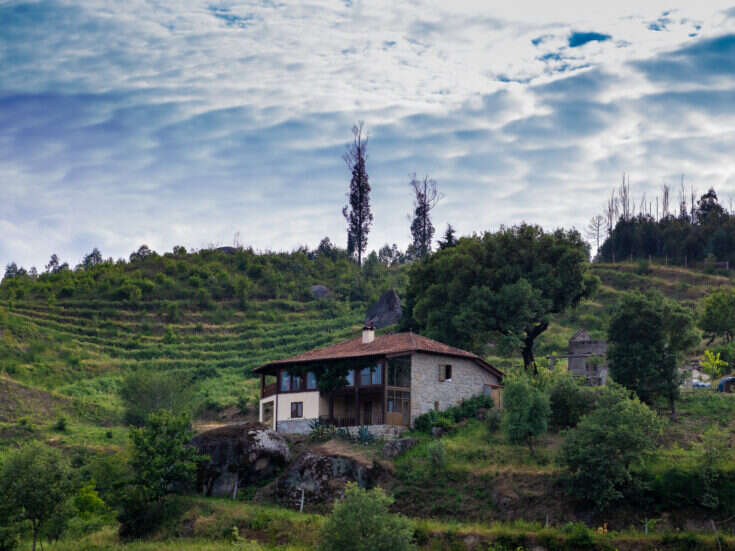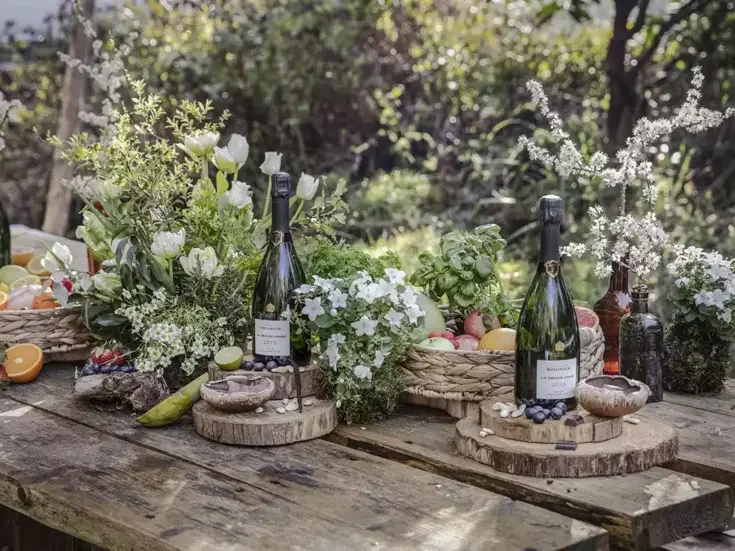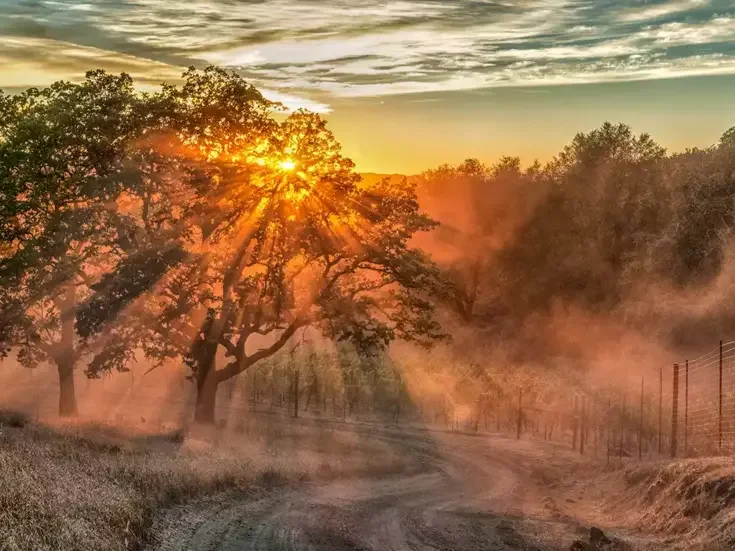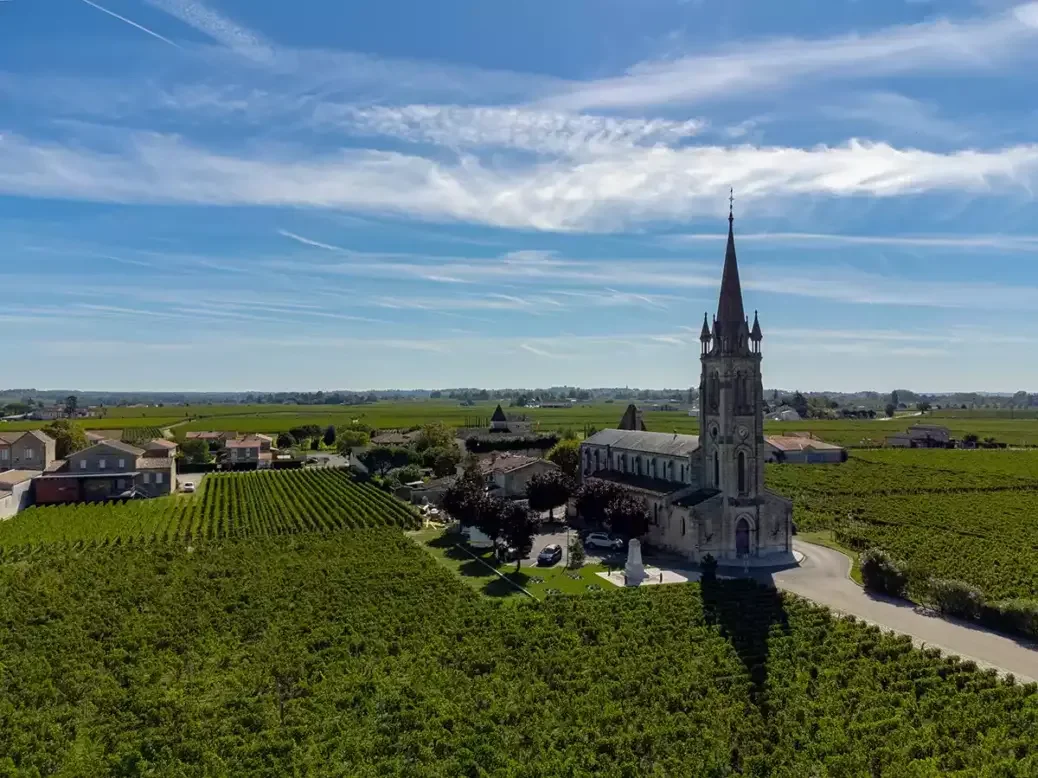
2023 Bordeaux tasting notes: Left Bank Part I
2023 Bordeaux tasting notes: Left Bank Part II
2023 Bordeaux tasting notes: Right Bank Part I
POMEROL
Château Beauregard (74% M, 20% CF, 6% CS)
SF | The Cabernet Sauvignon, planted in 2016, is slowly gaining ground in the blend. The same can be said for the use of 400- and 500-liter barrels, which Guillaume Fredoux, the technical director, uses to “open up” the aromatics and the texture. This, allied to the organic approach (Beauregard was accredited in 2014), provoke a fresh, pure wine, with herbs and peppery spice conjoined to the dark fruit and very fine tannins in support. | 93–94
Benjamin de Beauregard (90% M, 10% CF)
SF | The selection follows the terroir at Beauregard, with the clay-strewn vineyards closest to the main road reserved for the grand vin and the delightfully named Benjamin from soils farther down the slope, with more fine gravel and sand in the mix. The 10% Cabernet Franc is influential here, adding a leafy complexity and lift to the back of the palate. A sappy energy controls the dark fruit but fails to overwhelm it. | 92–93
Château Bourgneuf (90% M, 10% CF)
SF | The gravel and clay overlay a subsoil rich in iron ore. Whether or not by way of a non sequitur, Cabernet Franc is invited to the party and conducts itself very well, adding a little spice, literally and figuratively, and a fine, composed finish. The attack is imposing, a symphony of red and black fruit, fresh and beguiling, then, as often with the ’23s, a somewhat more Protestant mouthfeel, which is marked by weight above all. Finely etched tannins mark the finish, which is pure and powerful. An impressive showing from Bourgneuf. | 94–95
Château Certan de May (100% M)
SF | A deep color and an intriguing nose, which marries plums and blueberries with fennel and juniper, even a hint of licorice, a gift, maybe, from the iron component of the soil. Or maybe not… The palate is more muscular and assertive, the tight acid/tannin clasp allowing little by way of self-expression, the tannins quite powdery, hitherto somewhat regimented. As with many of the Pomerols in 2023, patience will be required. The quality of the inherent fruit seems sure to emerge, however, over the medium term. | 93–94
2023 Bordeaux Field Notes: Out of sorts?
Château Clinet (75% M, 25% CS)
SF | With 2ha (5 acres) of Merlot recently replanted and nothing new added to the blend, the proportion of Cabernet Sauvignon is increased, adding to the color, the fruit character (cassis, lavender, and a hint of mint), and the structural intensity here. With less fleshy voluptuous indulgence, this is more contemplative and complex, the old-vine, clay-dominated Merlot planted around the church in a neat counterpoint to the old-vine Cabernet, much of which dates from 1950. The 80% new oak is worn lightly, the tighter-grained barrels ideally suited to the intricacies of the fruit. Spice and fruit are elegantly intermingled, the acidity once again provides a disciplined framework, and the finish is composed and not overbearing. A very fine effort for Ronan’s 20th vintage at Clinet. | 94–95
Clos de L’Eglise (70% M, 30% CF)
SF | A distinctly meaty nose. The complex patchwork of clay and gravel, laced with iron oxide (crasse de fer) has fostered an attractive, floral wine, concentrated and composed, and with plenty of personality. Notes of peony, figs, and juniper sit neatly alongside the fruit, which is elegant and neatly proportioned. Behind that there is the tension of a firm backbone of acidity, which works well with the powdery tannins, together lending firm foundations and underwriting potential. | 92–93
Château La Conseillante (88% M, 12% CF)
SF | A magisterial episcopal hue, bright, limpid, more than welcoming. The aromatic is a little less creamy/voluptuous than sometimes but does not want for complexity. Dark blue fruit, then cherry and mulberry, hints of nutmeg and cardamon, a peppery aside, and a whisper of lavender. The palate is lively, with a gentle lift, an impressive purity of fruit, and a deft weave of finely grained tannins. 70% new oak, 27% second-fill, and, as usual, 3% amphorae, which may or may not make a significant difference. The Cabernet Franc most certainly does make a difference, completing its job perfectly, bolstering the finish and adding a whisper of sapidity. An accomplished and impressive Conseillante, playing to the strengths of the vintage and thereby setting down a qualitative marker. | 96–97
Château La Croix du Casse (96% M, 4% CS)
SF | A playful, enjoyable Pomerol, its soils, mainly clay over sand, located on the edge of the plateau. Attractive, fresh, and floral, and with a nice concentration of uncomplicated fruit and a pleasant, juicy finish. | 91–92
Domaine de L’Eglise (98% M, 2% CF)
SF | Traditional clay from the heart of the plateau, the vines, appropriately enough, located in the lee of the church. Relatively firm at the moment, lacking the fleshy generosity that sometimes marks out this property—a function of youth as much as of the vintage. The quality of the tannins, finely grained and persistent, suggests that patience will be rewarded. | 91–92
2023 Bordeaux Field notes: Single spies
Château L’Eglise-Clinet (90% M, 10% CF)
SF | Noëmie Durantou makes no apologies for actually upping the proportion of new oak in 2023. She feels, with reason, that it is the best match for the overall structure of the wine, and while one may take issue with such a statement tasting the second wine (La Petite Eglise), which has the same level of oak, there is little merit doing so here, such is the concentration and fine structural integration on show. The Merlot is especially rich mid-palate, recalling riper years, but the refreshing lift, plumstone, eucalypt, and pepper on the back tapers the edifice neatly and brings us straight back to 2023—and one of its most successful offspring. | 96–97
Château L’Evangile (78% M, 21% CF, 1% CS)
SF | Juliette Couderc, the technical director, is debating whether to plant Cabernet Franc on the clay element of the Evangile soil triptych. Hitherto it has mainly been grown on gravel, with just a little on the sandy soil. Its increased significance over the past four years especially reflects an aspiration to add tension, to ensure harmony at the back of the palate, and to avoid too much creamy indulgence, the latter also achieved by introducing a proportion of foudre-aging and keeping the new oak to 50% or less. All these goals have been deftly negotiated in 2023, its elegant fruit character (sloes and blueberries to the fore) held in check by spice and fine-grained tannins. They are almost chalky, despite the absence of limestone in the vineyard. Impressive concentration and poised acidity bolster what is a more than competent effort, which still has a very finely tapered yet persistent finish. | 96–97
Blason de L’Evangile (95% M, 5% CF)
SF | Deep ruby garnet, with a rich, chocolaty mouthfeel, densely textured but less plush than it sometimes is. What Juliette Couderc describes a the “pedagogical” (textbook, maybe) order of picking (gravel, then clay, and finally sand) has regimented a harmonious, textured mouthfeel, with notes of raspberry, hazelnut, and clove all vying for attention. There is impressive mid-palate concentration here, but with restraint and a lift on the end, which are both typical of the vintage. | 94–95
Château Gazin (89% M, 7% CF, 4% CS)
SF | Nicolas de Baillencourt is handing over to his niece, Elise. I shall miss our discussions on the Plantagenet influence of the English kings on the commune and town of Libourne—entirely benevolent, if Nicolas is to be believed. The property remains in family hands, and the civilized and dignified ambience continues to permeate the wine, an archetype of finesse in an appellation that, especially in warmer years, can tilt toward overindulgence. Indeed, according to technical director Mickaël Obert, 2023 was warmer overall than 2022 but with fewer heat spikes and, significantly, less hydric stress. Gazin rises above such inconvenience with nonchalance, the charming nose of peony and myrtle ceding to a perfectly harmonious palate, with silky tannins and just the faintest hint of rosemary in the background. The wine has been aged in 50% new barrels. | 94–95
Château La Grave (100% M)
SF | A relatively early harvest at La Grave (September 7–19) and a forward, fruity style, with plenty of power and unmistakable elegance. Purity of fruit on the nose and a pleasing Merlot sweetness on the palate, with hints of forest floor and eucalypt in support. There is more mid-weight self-assurance here than in some of the Pomerols this vintage—a fine seam of acidity, just a little angular in places at the moment, but with a billowing, generous finish by way of compensation. | 92–93
2023 Bordeaux Field notes: Château Lafleur—La Balançoire
Château Hosanna (74% M, 26% CF)
SF | Squid-ink color, with only the faintest of rims; near opaque. The nose is classy, with Merlot charm harnessed by Cabernet grip, a certain leafiness and swell of umami. The innate complexity from the marriage of the two grapes is underwritten by their differing functions, with the Cabernet Franc especially significant in a year such as 2023 (certainly not cool, but perhaps a little less warm than of late in the middle of the season). Powdery tannins are assertive on the finish, the weight of fruit poised to emerge, triumphant, over the medium term. Give this just a little more time to shine. | 93–94
Château Lafleur (46% M, 56% Bouchet)
SF | The Guinaudeau’s “garden vineyard” of 3.75ha (9.3 acres) sees sand and clay playing supporting roles to the dominant gravel—a different soil, therefore, from that beneath some the great names of the plateau of Pomerol. Inky of color and with appropriately floral scents, this is a densely textured wine with ethereal tendencies and more allusive scope than the taster has any right to deserve: tobacco, peony, griotte, peppercorn—the list is endless and endlessly inadequate in attempting to describe, clumsily, the merest components of a very complete edifice. The 2023 is marked by a linear character, by very finely grained tannins, by generosity masked as restraint, and by complexity attuned effortlessly. | 97–98
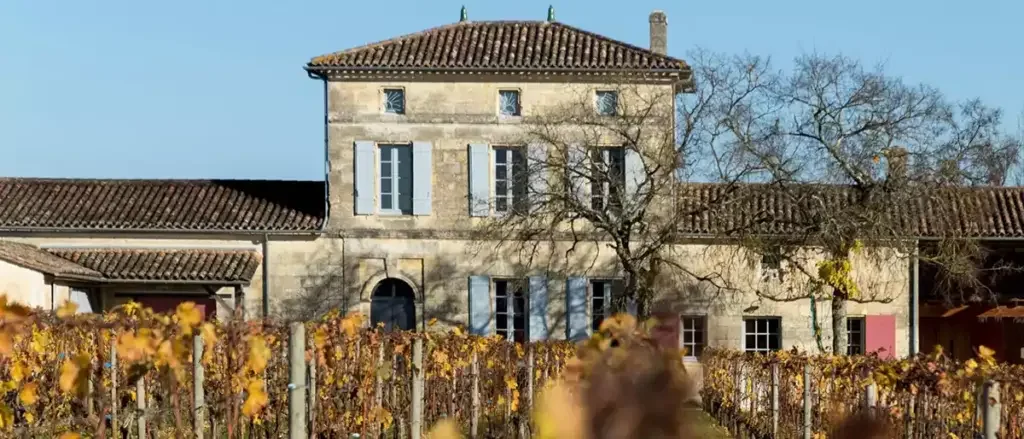
Les Pensées de Lafleur (70% M, 30% Bouchet)
SF | From a cigar-shaped clay enclave of a mere 0.7ha (1.7 acres) anchored within the Lafleur’s gravel, this is a delicious anomaly: round and broad, generous, and soft; black cherry, tobacco, bay leaf, and an elegant tannic structure. Violets at the front, salinity at the back; the structure guides us from one to the other—a long journey one might have thought—with guileless ease. | 95–96
Château Lafleur Gazin (100% M)
SF | Deep, imperious color, then aromas of myrtle, plum, and spice. Expressive but far from overly demonstrative. The core of fruit is touched by élevage, with firm grip and plenty of matière. A slight hardness is evidenced at the core of the wine, a certain austerity, bequeathed by the cooler midsummer and the earlier struggles, especially with the Merlot. Layered and not lacking for concentration. One must await the finesse, it seems. | 93–94
Château La Fleur-Pétrus (96.5% M, 3% CF, 0.5% PV)
SF | Deep color and with an attractive nose of rosehip, blueberry, and chalk, just a hint of camphor in the background. A broad mid-palate, with regal tannins cloaking the berries, a well-fitted garment, inherent generosity assured, but no danger of excess, texturally or otherwise. This is where 2023 can really stand out—when, and only when, it succeeds: a fine metronome to harmonize a cacophony of potential overindulgence. A terrific La Fleur-Pétrus. | 95–96
Château Lagrange (100% M)
SF | Gravel over ancient blue clay—quintessential Pomerol, in other words. A shy nose, eventually offering rose petals, peony, and plum stone. Chalk and a hint of forest floor—umami, even. Regal and sufficiently unassuming to assume a dignified reception. The palate has not quite resolved itself, however, and there is a slightly hard, almost hollow core that needs a little time to integrate. The acidity runs down the palate, offering the prospect of rescue, and there is marked salinity on the finish. Needs time. | 92–93
2023 Bordeaux Field notes: The endless appeal of Sauternes
Château Latour-à-Pomerol (100% M)
SF | Bright color, with a generous plum, blueberry nose, hints of spice on the finish. An appealing aromatic, open and rich, redolent of fruit skin and murmurs from the forest. The fruit opens up beautifully mid-palate, more eloquent and self-confident than many of its peers, and marked by precision, as well as generosity. A very successful 2023, less opulent than its forebear, for sure, but composed and finely balanced, the acidity, born of clay and gravel, elegant and resourceful. | 94–95
Château Lecuyer (75% M, 15% CF, 10% CS)
SF | Deep color. A rich, creamy aromatic of plum, bilberry, and vanillin, a richness worthy of 2022. Indeed, with an alcohol level of 14.5%, it is only half a tick short of its illustrious forebear. From the more flamboyant end of the Pomerol spectrum, then, but not lacking for composure and a finely chiseled finish, the significant line of acidity buttressing the ensemble with poise. | 92–93
Château Nénin (67% M, 30% CF, 3% CS)
SF | A restrained Nénin, composed in a minor key. Elegance and soft fruit character aplenty, but little by way of the exuberance that one might expect from Pomerol clay. Instead, the 2023 reflects the dignified restraint of a subtle craft, in tune with a less demonstrative vintage. Patience will be rewarded, because the components are all perfectly in place, and the élevage (40% new oak) has been generous. | 93–94
Château Petit Village (65% M, 25% CF, 10% CS)
SF | The gradual rise of the Cabernets at this property makes itself felt with the powerful 2023, with a distinct blackcurrant/herbal aromatic and very finely etched tannins marking out distinguished territory. The acidity is prominent, buttressing and refreshing and nicely woven into a tight-grained fabric that does not, for all that, want for weight of fruit, the latter confirming the Pomerol imprimatur. This fascinating, ever-evolving Pomerol demonstrates the complexity that may be coaxed from this famous clay. | 93–94
2023 Bordeaux Field notes: La Tour Figeac—La Chartreuse de St-Emilion
Le Petit Petit Village (88% M, 12% CF)
SF | The wine formerly known as Le Jardin is now, much more memorably, renamed as Le Petit Petit. As at Beauregard, the Cabernet Franc (propagated by sélection massale) makes its presence felt, more assuredly at the back of the palate. Thus far, there is therefore a faint diaspora between the pure cassis attack and the marked eucalypt note at the back. This seems sure, though, to harmonize over time. | 92–93
Château Petrus (100% M)
SF | Both the timing and the nature of the pruning (wide-space single Guyot) helped reduce the mildew threat, and when it came, as it did everywhere, it was thanks to vigilant and incessant intervention that a near-normal yield of 41hl/ha was achieved. It is a surprise, on tasting, when Olivier Berrouet advises that the tannin levels are actually higher than in 2022, such is their integration, their chalky complexity finely woven around the fabric of fruit. Less obviously plush and fleshy than in some years, the wine provokes consideration, with the acidity lifting the structure and the élevage (50% new barrique) perfectly in tune with the aspiration to make the taster think at this early stage, rather than allowing him or her to recline, without having done much work, on a luxuriant bed of earthly delight. That moment is still to come. | 97–98
Le Pin (100% M)
SF | Guillaume Thienpont describes the 2023 vintage as a classic Atlantic year, with the free-draining gravel soils more than a match for the early precipitation and the late sunshine (up to 99˚F [37˚C] by the end of August) that, to borrow his phrase, put a smile on the Merlot’s face. The palate, accordingly, develops and intensifies the blue-fruit aromatic and builds steadily to a fine, chiseled peroration, the iron oxide in the soils lending floral notes (violet, in particular) and elegant, fine-grained tannins. Diana Berrouet Garcia compares the 2023 to the 2019, though concedes that 2023 was a little cooler. 2019 was the last time that 100% new barrels was deployed; today, the proportion is closer to two thirds. There is, accordingly, grip but not dominance, the silky counterpoint very finely judged and executed. A highly successful Pin. | 96–97
Château Trotanoy (100% M)
SF | Dense purple, the rim narrow. An attractive nose of red and black fruit, summer pudding, briary and tobacco, very Pomerol. The palate captures the essence of vintage and terroir alike; with grip, a slowly unfurling fruit character, and finely etched chalky tannins. The mid-palate has old-vine authority and plenty of nuance; the back is neatly embroidered and deftly constructed. The firm acidity is present but not overwhelming. A very impressive Trotanoy from a subtle and nuanced vintage. | 94–95
Vieux Château Certan (82% M, 18% CF)
SF | Guillaume Thienpont has been kept busy this year, making both Le Pin and VCC. The differences are instructive, the former a mono-cépage on a single soil type, the latter a blend, with the 14ha (35 acres) spread over terroir with differing levels of clay and gravel. The heat spike toward the end of August shut down the Cabernet Sauvignon (there was 5% in the 2022), and the proportion of Cabernet Franc was also a little lower than its predecessor. The Merlot has excelled, however, its fruit generous yet balanced, its aromatic floral and mineral-laced, its tannins precise yet persistent, coiling effortlessly around a solid core of fruit. Two thirds of the barrels are new. A wine of great pedigree and hallmarked finesse. | 96–97
2023 Bordeaux Field notes: House of cards

